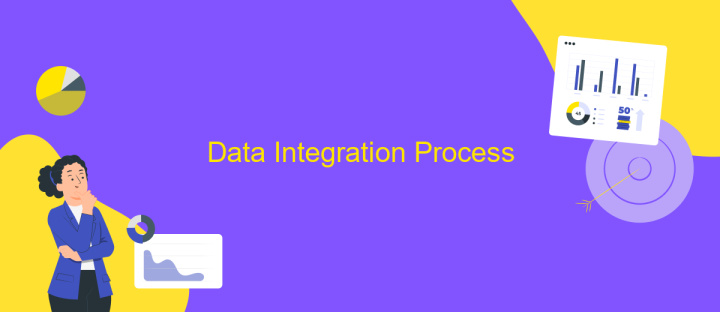Explain Data Integration
Data integration is a crucial process in modern business and technology, enabling the seamless combination of data from different sources into a unified view. This practice enhances decision-making, improves efficiency, and provides comprehensive insights. In this article, we will explore the fundamentals of data integration, its benefits, and the various techniques used to achieve effective data consolidation.
Introduction
Data integration is a critical process in today's data-driven world, enabling organizations to combine data from various sources into a cohesive, unified view. This process not only enhances data accessibility and reliability but also supports better decision-making and operational efficiency. As businesses increasingly rely on diverse data types and sources, effective data integration becomes indispensable.
- Combining structured and unstructured data
- Ensuring data quality and consistency
- Facilitating real-time data access
- Supporting scalable data management
Implementing robust data integration strategies allows organizations to harness the full potential of their data assets. By addressing challenges such as data silos, inconsistencies, and integration complexities, businesses can achieve a comprehensive view of their operations and drive innovation. As a result, data integration serves as a foundational element for advanced analytics, business intelligence, and overall organizational growth.
Data Integration Concepts

Data integration involves combining data from different sources to provide a unified view. This process is crucial for businesses aiming to make informed decisions based on comprehensive datasets. Key concepts in data integration include data warehousing, ETL (Extract, Transform, Load), data lakes, and real-time data integration. Data warehousing involves storing data from multiple sources in a central repository, while ETL processes focus on extracting data from various sources, transforming it into a suitable format, and loading it into a destination system. Data lakes, on the other hand, store vast amounts of raw data in its native format, allowing for flexible analysis and processing.
Real-time data integration is becoming increasingly important as businesses seek to leverage up-to-the-minute information. Tools and services like ApiX-Drive facilitate seamless data integration by automating the process of connecting different applications and data sources. ApiX-Drive allows users to set up integrations without the need for extensive technical knowledge, streamlining workflows and ensuring data consistency across platforms. This service supports a wide range of applications, making it a versatile solution for businesses looking to enhance their data integration capabilities.
Data Integration Process

Data integration is a critical process that combines data from different sources into a unified view, ensuring consistency and accessibility. This process is essential for businesses to make informed decisions and gain insights from their data. The process of data integration typically involves several key steps:
- Data Extraction: Collecting data from various sources such as databases, cloud storage, and external APIs.
- Data Transformation: Converting the extracted data into a consistent format, which includes cleaning, normalizing, and enriching the data.
- Data Loading: Inserting the transformed data into a target database or data warehouse, making it available for analysis and reporting.
- Data Synchronization: Ensuring that the integrated data remains up-to-date by regularly updating it from the source systems.
- Data Quality Management: Continuously monitoring and improving the quality of the data to maintain its accuracy and reliability.
By following these steps, organizations can achieve seamless data integration, leading to better data governance and more accurate analytics. This process not only enhances operational efficiency but also provides a solid foundation for advanced data-driven strategies.
Challenges and Benefits of Data Integration

Data integration is a critical process in modern organizations, yet it presents numerous challenges. One of the primary difficulties is dealing with disparate data sources, which often have different formats, structures, and standards. This complexity can lead to significant time and resource investments in data cleaning and transformation.
Moreover, ensuring data quality and consistency across integrated systems is another major hurdle. Inconsistent data can lead to inaccurate insights and poor decision-making. Additionally, data security and privacy concerns are paramount, especially when integrating sensitive information from multiple sources.
- Improved decision-making through comprehensive data analysis
- Enhanced data accuracy and consistency
- Streamlined business processes and operations
- Better customer insights and personalized experiences
Despite these challenges, the benefits of data integration are substantial. Organizations can achieve a unified view of their operations, leading to more informed decisions and strategic planning. By overcoming integration obstacles, companies can unlock the full potential of their data, driving innovation and competitive advantage.
Conclusion
In conclusion, data integration is a critical component for modern businesses aiming to streamline their operations and enhance decision-making processes. Effective integration allows for seamless communication between disparate systems, ensuring that data flows smoothly and is accessible in real-time. This not only improves operational efficiency but also provides a unified view of the organization's data, enabling better strategic planning and execution.
Utilizing advanced tools and services like ApiX-Drive can significantly simplify the process of setting up and managing data integrations. ApiX-Drive offers a user-friendly platform that automates data transfer between various applications, reducing the need for manual intervention and minimizing the risk of errors. By leveraging such services, businesses can focus on their core activities while ensuring their data systems are robust, reliable, and well-integrated. As data continues to grow in volume and complexity, the importance of effective data integration will only increase, making it an indispensable aspect of any successful business strategy.
FAQ
What is data integration?
Why is data integration important for businesses?
What are the common challenges in data integration?
How can businesses automate data integration processes?
What should be considered when choosing a data integration tool?
Strive to take your business to the next level, achieve your goals faster and more efficiently? Apix-Drive is your reliable assistant for these tasks. An online service and application connector will help you automate key business processes and get rid of the routine. You and your employees will free up time for important core tasks. Try Apix-Drive features for free to see the effectiveness of the online connector for yourself.

